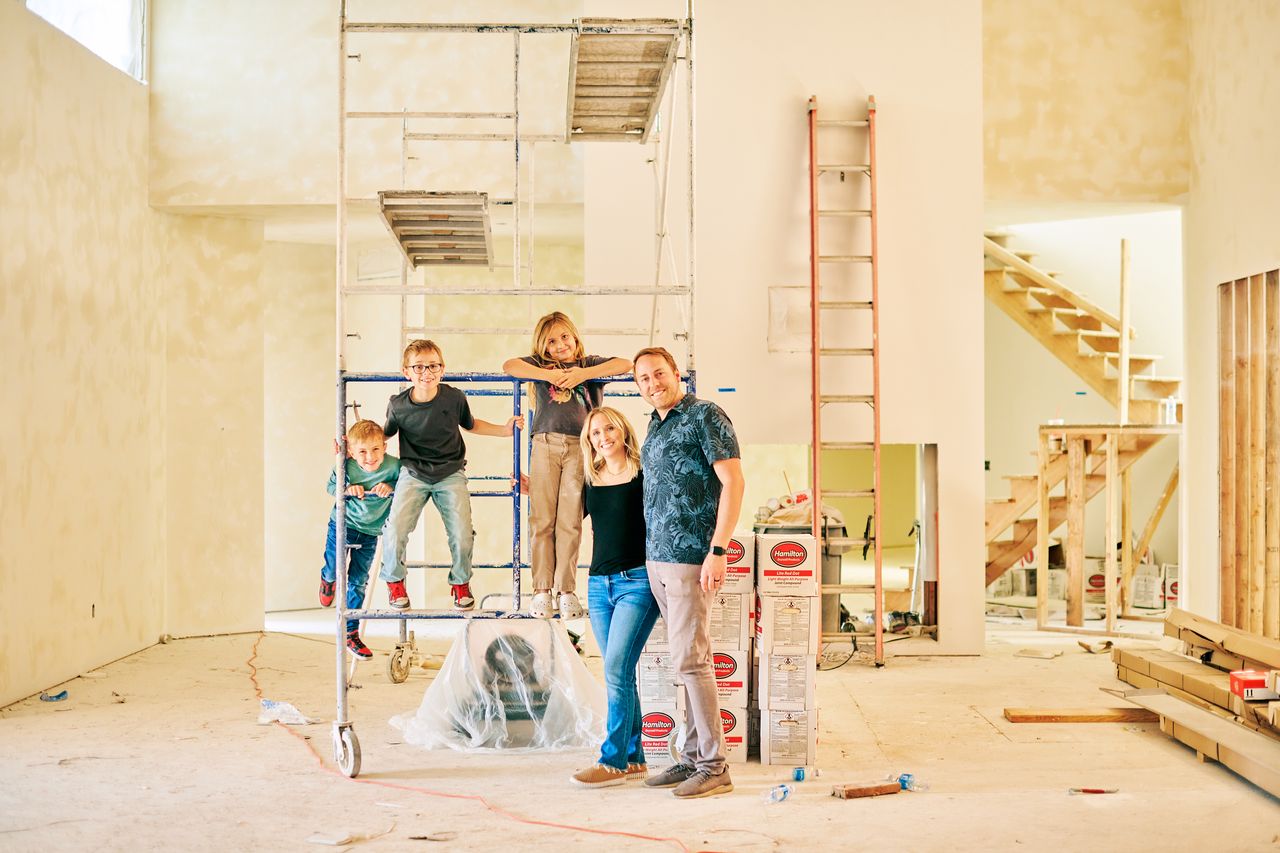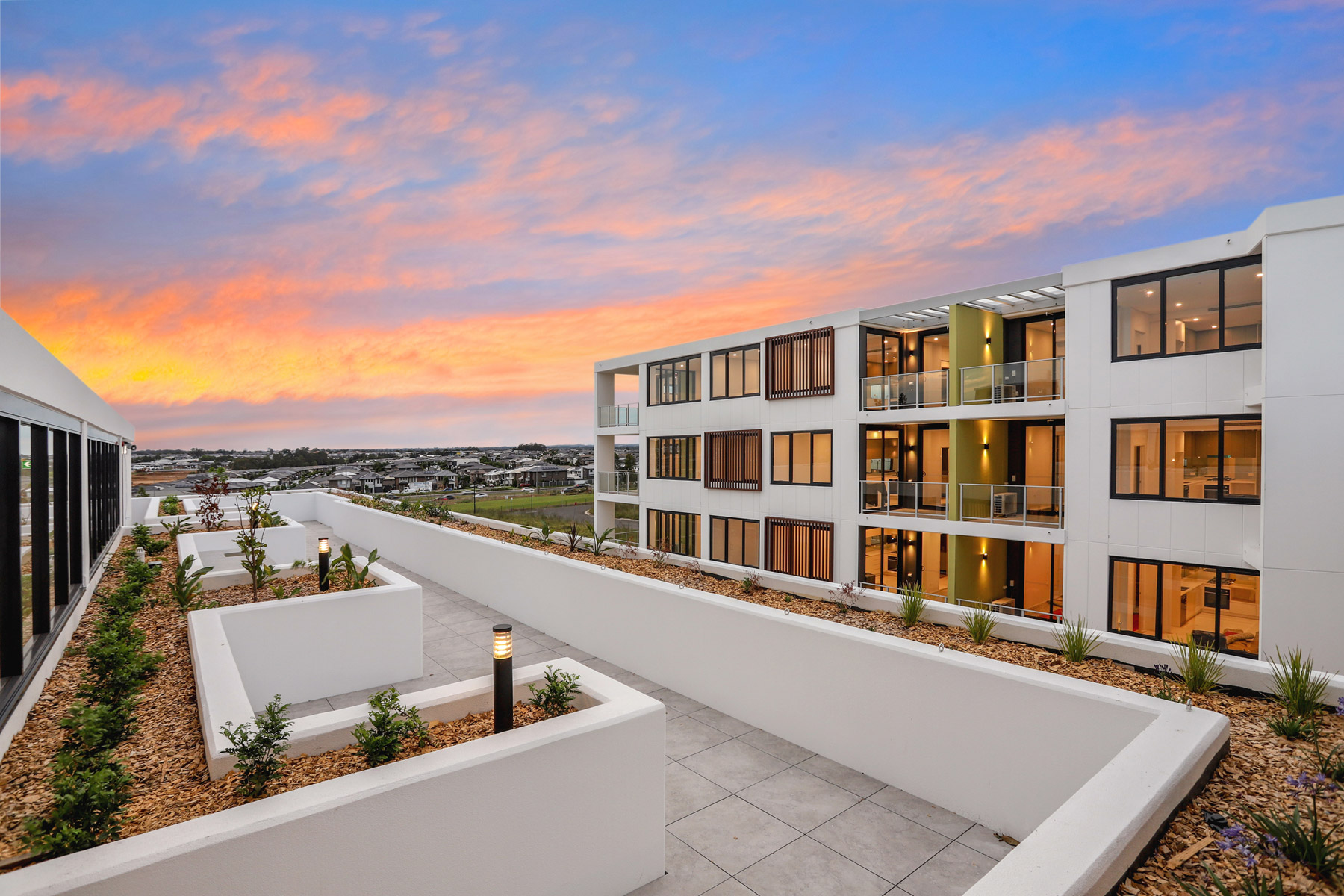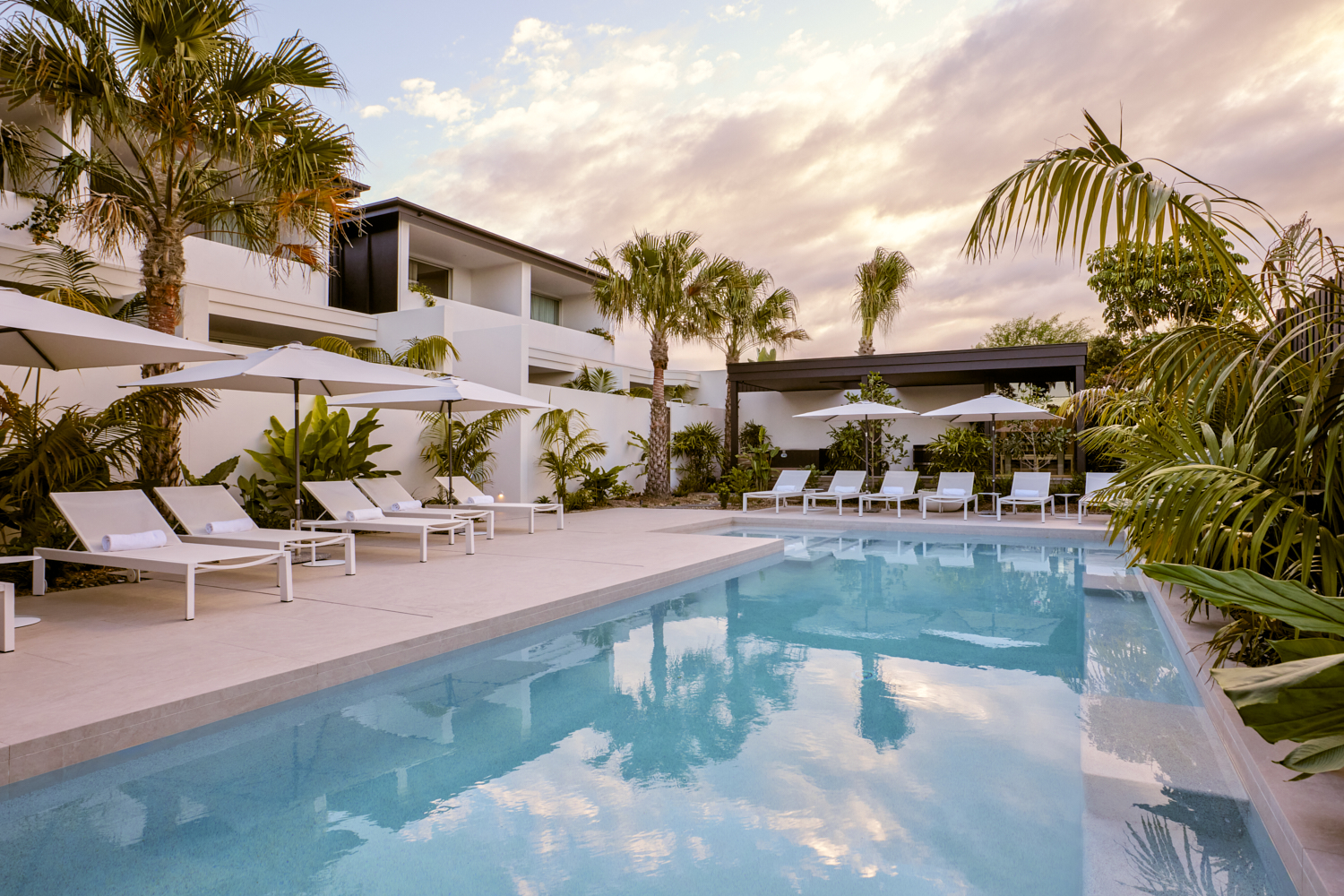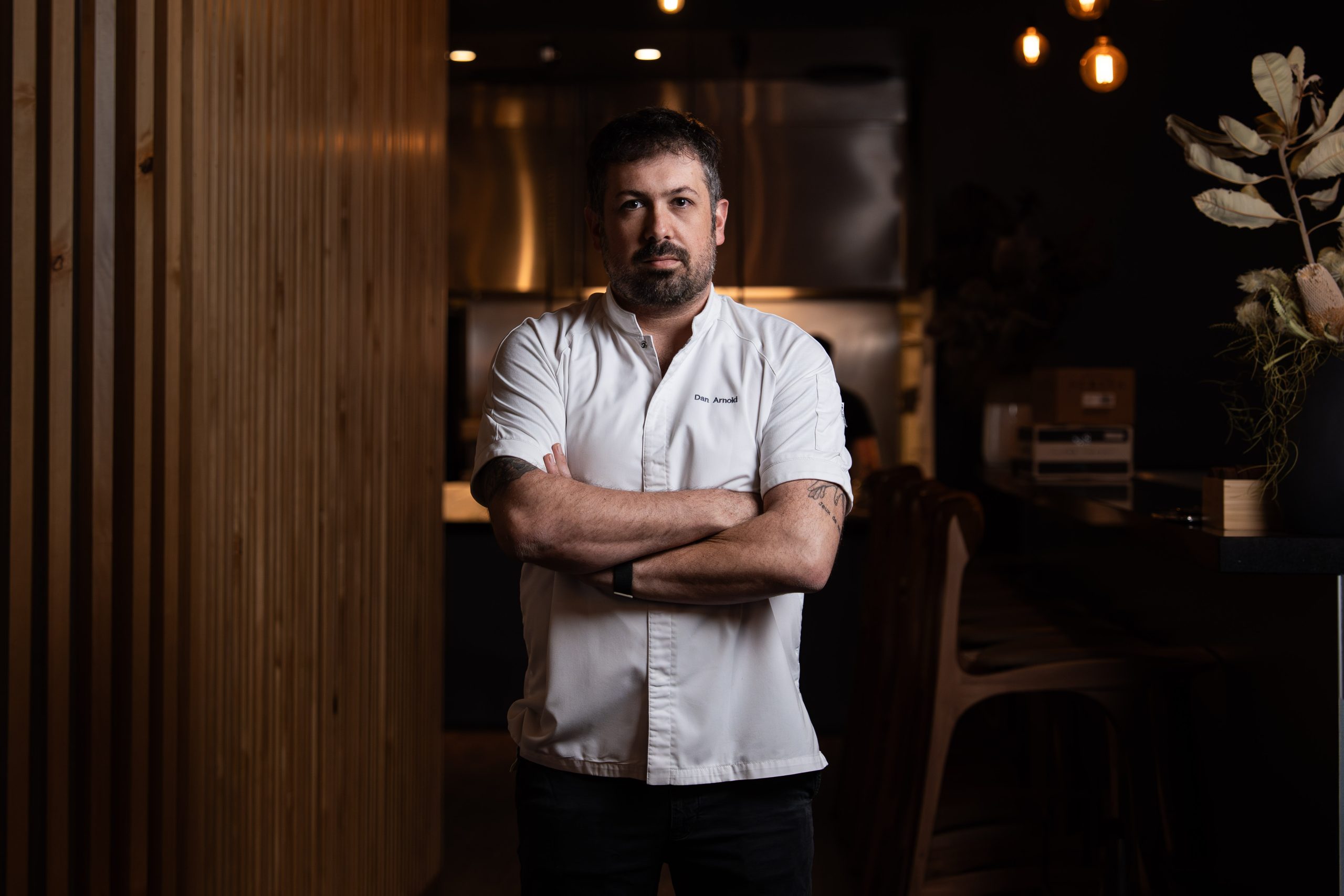Stressing Over Your Next Home Renovation Project? Let AI Handle It.
A sea of apps is helping take the headache out of home design and construction. ‘There seems to be a new one every day.’
Halfway through the building process of Kyle Loucks’s new five-bedroom, 5,800-square-foot house in Vancouver, Wash., his wife decided she wanted to add a sports court.
At first he panicked. “One seemingly small decision, like ‘let’s put a hoop here,’ has a ripple effect,” says Loucks, 37, a former Meta engineer who founded a joint-rolling technology company called RollPros.
Using new AI software called Digs on his laptop, he put a box into the house plans, first in the backyard. Then, seeing that it wouldn’t fit well, he moved it to the driveway. Within minutes, his contractor, notified by Digs of the change, confirmed that the dimensions would work and messaged the concrete guys to let them know before they did the pour and to see if they had any input on holes for a pickleball net. The landscape designer weighed in, suggesting a couple of trees nearby to help it blend in, and the lighting subcontractor advised them on how a flood light would affect the high-voltage plan.
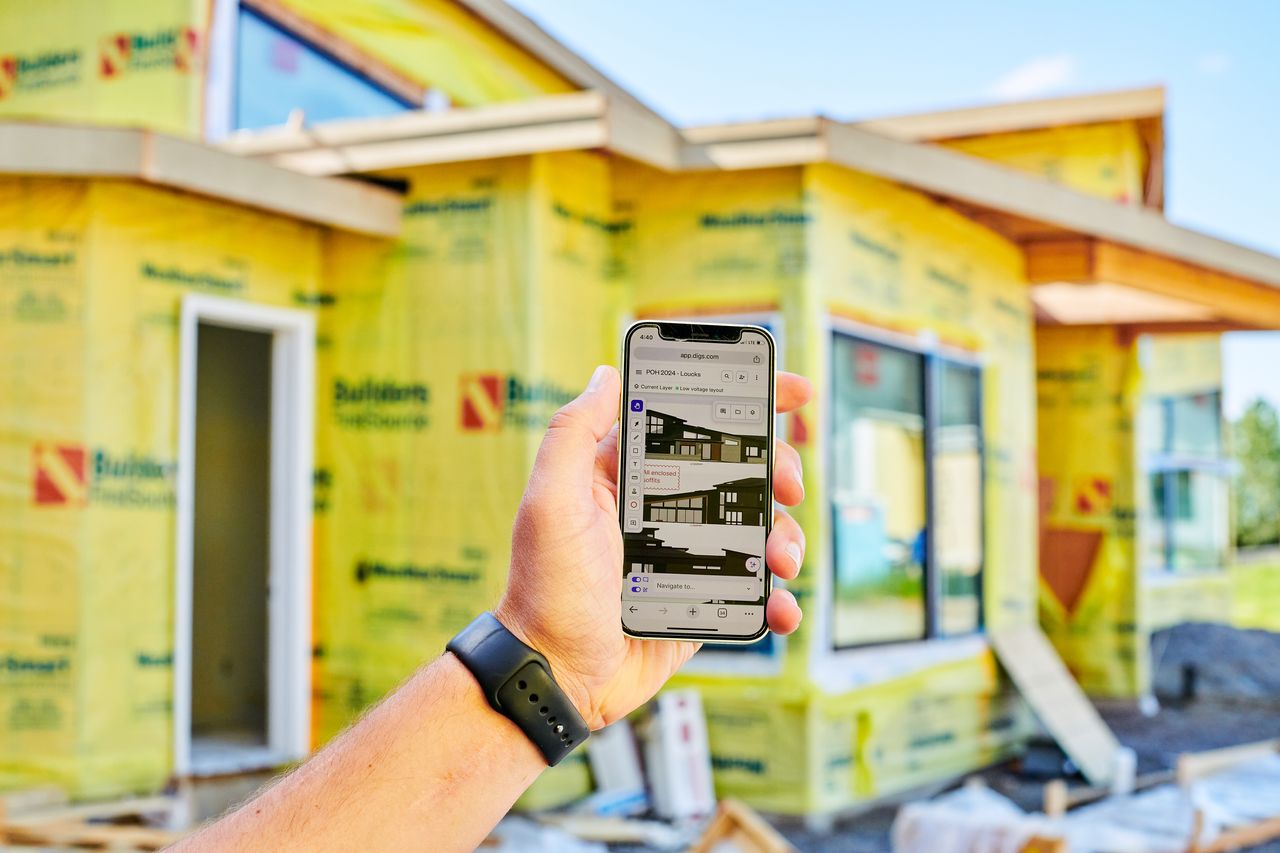
“It helped bypass the possibility of human error and miscommunication,” says Loucks, whose home is slated to cost around $2.2 million and to be finished in October.
Homeowners are experimenting with an explosion of new artificial intelligence applications to quickly visualise an array of layout and style ideas, coordinate with builders and designers and estimate costs. These new tools say they can help save time and money in the building and renovation process, which has traditionally been filled with seemingly endless decisions and an avalanche of paperwork that often result in longer projects and ballooning costs.
There are now dozens of AI apps related to home construction, design and renovation—most of which have sprung up in the past two years.
“There seems to be a new one every day,” says Patrick O’Toole , publisher of Qualified Remodeler, which did a survey in March 2023 of its 83,000 readers and found that about half have tried generative AI tools.
Some apps, like Renovate AI, focus on visualisation. Users can generate images to see how different design ideas might look by uploading photos or drawings of their rooms. Then they can choose styles like “rustic farmhouse” or tell the tool to adjust specific elements like paint colors, lighting, furniture or the style of the cabinets.
Other platforms, like Digs, use AI to create 3-D “dollhouse” floor plans and manage the logistics of a project, room by room. Digs can layer in the location of specs like the load-bearing beams, plumbing lines and lighting plans to show where walls can be knocked down, and users can query it to get the make and model of an appliance or the dimensions of the wall, all sourced from the original documents.
Analysts say the demand for new tools is driven in part by the state of the housing market. The decline in construction of new houses, combined with a rapid run-up in interest rates over the past two years that sent mortgage rates soaring, has resulted in many people choosing to stay and fix or add on to homes they already own. Spending on DIY projects soared 44% from 2019 to 2021, the latest stats available, according to Harvard’s Joint Center for Housing Studies.
The new apps offer homeowners a way of gaining control over what can be a dizzyingly complicated and opaque process, though not without their own risks.
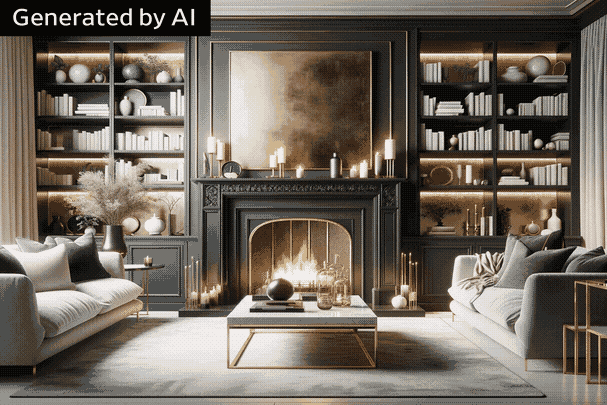
Jess Sandlin, 38, is working with an architect and designer to renovate a 9,000-square-foot home she and her boyfriend bought in Austin, Texas, for $2.5 million. But she is also using an app called Remodel AI as well as ChatGPT to help her get a sense of the possibilities and to empower her with images she can show since her vocabulary doesn’t include technical architectural terms.
“I wanted to get a sense of my own style and be a little more knowledgeable so I didn’t just get their style,” says Sandlin, executive director of Word Playground, a nonprofit for teaching children literacy.
As she tested out different prompts to home in on her own design sensibilities, Remodel AI generated hundreds of options—including some with furniture on the ceiling and the walls. She wanted an indoor play area for her four sons, aged 5 through 13, to include multiple layers of hammocks, a zip line and netting. The app couldn’t handle it. “It had no idea what I was talking about. It could not compute,” she says.
Dirk Morris, founder and CEO Reimage AI, the maker of the Remodel AI app, which costs $10 a month or $50 a year, says Sandlin may have been using the wrong tool: Sometimes people try to use the standard interior remodel tool to make extensive structural changes, he says.
Even when Sandlin was able to generate exactly what she wanted, she ran into human roadblocks. When she showed her architect AI-generated photos of a bronze fireplace with a brass mantle, “they rolled their eyes at me,” she says. Eventually, her designer agreed to the bronze.
While traditionally AI tools were aimed at professionals, the newer apps are letting laypeople in on the game, says Michael Anschel , a principal at Minneapolis-based OA Design and Build Architecture.
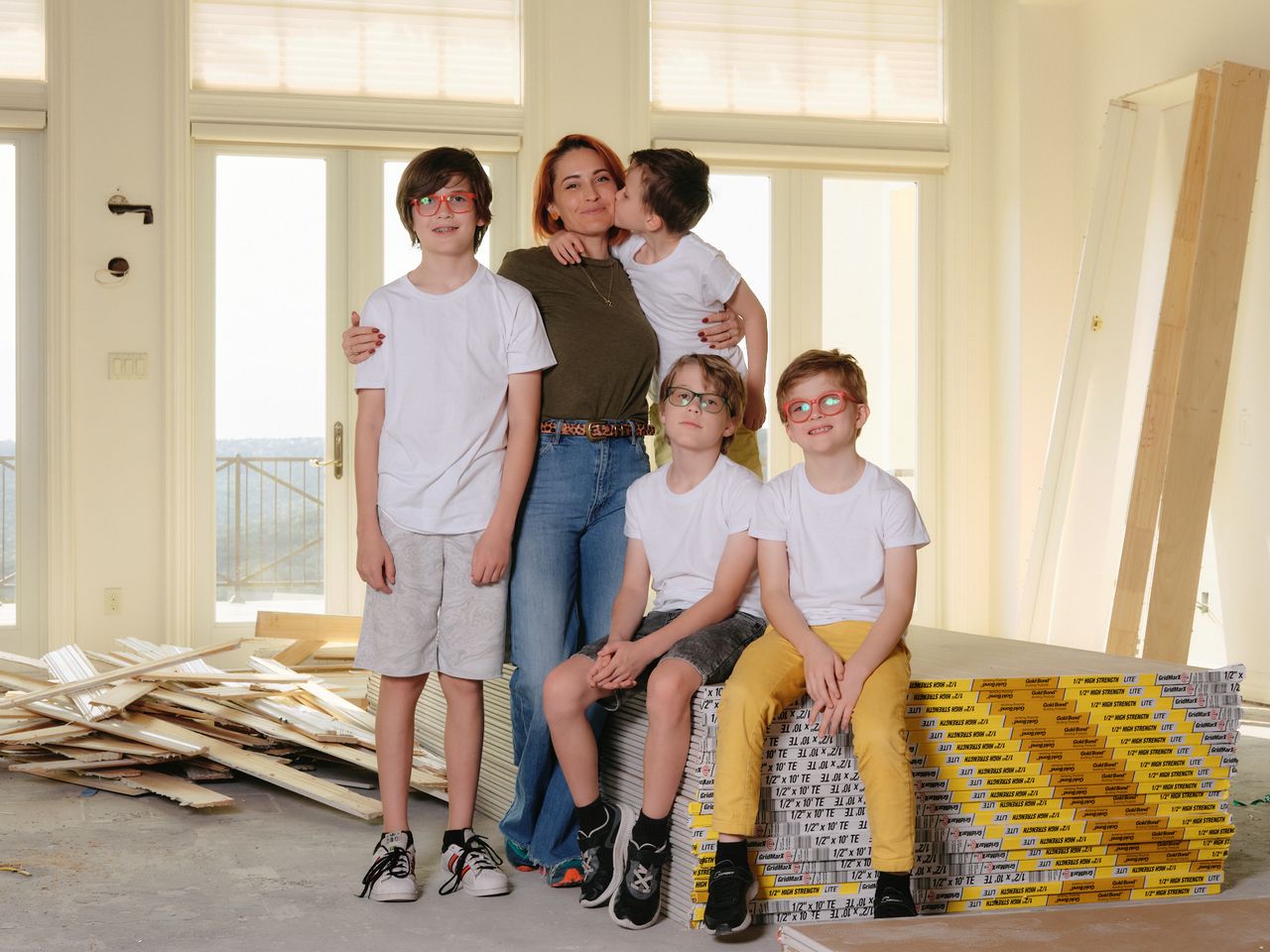
However, he says the tools aren’t sharp enough yet. For example, when Anschel asked Renovate AI to generate a kitchen with hand-scraped stone counters and paisley wallpaper, he got an image with stainless steel counters and paisley wallpaper on the cabinets and the ceiling.
Other pros have expressed concern about having to address design ideas that might not be possible from clients armed with AI-generated images. “It could be extremely annoying,” says Daniel Kaven of Portland, Ore.-based William Kaven Architecture.
Laura Bindloss, 38, who owns a social media and public relations agency, has renovated several homes, but she had never used AI to help until her most recent project: a 2,000-square-foot house she bought in March for $575,000 in Bellport, N.Y. Bindloss, who plans to live in the house on weekends as well as rent it out, was looking to spend a total of around $200,000, with $55,000 on the kitchen alone. She wanted to get the project done quickly so she could start renting it out this summer.
“I’d heard about it as a visualisation tool but it didn’t seem that useful,” she says. When she hired cabinetmaker Isla Porter to design the kitchen, she found that the company was using AI provider Skipp, which can make a scan from a phone into detailed renovation plans, complete with renderings, materials lists and construction-ready documents. The first step was to take a 3-D scan of the space with her iPad. She then answered a 40-question survey, with questions like “where do most meals happen” and “what do you like most and least about your current kitchen.”
The AI used her scan and survey responses to generate hundreds of floor plan options within minutes. Isla Porter’s designers then manually edited them, significantly reducing the time it would have taken if the designers had to go through the survey results without the technology, says Sharon Dranko, Isla Porter’s founder. Bindloss then picked from the three options Isla Porter recommended, choosing materials and finishes in the program to see how everything would look. The design plans for the kitchen were finalized in two weeks, says Bindloss.
Dranko says that even though the AI’s measurements tend to be 98% accurate, it’s still crucial to have a human designer double check everything. AI is also off sometimes when it comes to understanding living patterns, meaning how the way a person uses their kitchen should impact the design, she says. Dranko says she is constantly feeding it new information like colors and fabrics to make it more useful when it comes to finding the right style and look for her clients.
The idea of using AI in his home renovations came to Kade Boverhof when he was looking at possible floor plans for the renovation of a 1,900-square-foot house he bought in Grand Rapids, Mich., for $150,000.
Boverhof, 31, wanted to create a floor plan for the house that took into account all the iterations he’d devised in previous renovation projects using a computer-aided design (CAD) software program. There must be an AI program that could do this, he thought.
After searching Google and going on Reddit to ask others what they were using, Boverhof came across an app in development called A-Space, which let him use its tools for free as an early adopter in exchange for his feedback. He downloaded his existing blueprints, which included information on the location of walls that were necessary to hold up the structure, added some instructions and hit generate. From the four options, Boverhof locked in the kitchen location he liked best and again pushed the generate button to see the options for the other rooms around that decision.
Boverhof says the results weren’t perfect. It didn’t know the local building codes for the city of Grand Rapids, such as the percentage of space required to be windows or doors. But he says he saved many hours and got back new layout ideas that he could tailor.
“It’s at a primitive stage, but the possibilities are there,” he says.
Ryan Fink, CEO and co-founder of Digs, says that of the some 6,000 homes currently on its platform, half have homeowners participating. Builders currently pay $69 per user per month, but the contractors, vendors and homeowners involved in the projects participate for free, he says.
Sid Sarasvati founded Renovate AI because of the difficulties he encountered with staging homes for sale. He says the app will continue to improve, such as offering users the option to click on products to buy online, create budgets and connect with vendors. Launched in January 2023, it has some 15,000 subscribers now, 40% of whom are on a $10-a-week plan and 60% of whom are on a $40 annual plan.
Many of the AI apps are aimed at improving the speed and communication for homeowners working with an architect or designer. But some, including A-Space, hope to democratise the process and reduce the need for architects by automating tasks like filling in planning applications.
“We want to give every person access to architectural expertise,” says Ziyad Mourad, CEO and co-founder of A-Space, which plans on offering the app free to homeowners for a single project and for $50 a month to architects for unlimited use.
WSJ Tests an AI Remodelling Tool
Rashad Fakhouri, an architect at London-based Pilbrow & Partners, who is currently using A-Space on the side but not for work projects, says he doesn’t foresee a time when AI will replace architects because of the need for the architect’s aesthetics and their ability to troubleshoot throughout the process.
“We will still be necessary,” he says.
In five years, AI tools for home remodelling and construction will become more integrated, says Jose Luis Blanco, senior partner at McKinsey who leads the firm’s engineering and construction work in North America. “We are in the early innings,” he says.
Mike Rowe, of “Dirty Jobs” TV fame and a spokesman for AI provider Digs, agrees that the continued expansion of AI will democratise the home-building process. “It will put a lot more power in the consumers’ hands,” he says.
Some homeowners say the tools are already offering a newfound leg up in managing their projects with the pros.
“AI doesn’t talk back,” says Austin homeowner Sandlin.
 Copyright 2020, Dow Jones & Company, Inc. All Rights Reserved Worldwide. LEARN MORE
Copyright 2020, Dow Jones & Company, Inc. All Rights Reserved Worldwide. LEARN MORE
A divide has opened in the tech job market between those with artificial-intelligence skills and everyone else.
A 30-metre masterpiece unveiled in Monaco brings Lamborghini’s supercar drama to the high seas, powered by 7,600 horsepower and unmistakable Italian design.
A 30-metre masterpiece unveiled in Monaco brings Lamborghini’s supercar drama to the high seas, powered by 7,600 horsepower and unmistakable Italian design.
When Lamborghini takes to the water, subtlety isn’t on the agenda. Unveiled at the Monaco Yacht Show, the Tecnomar for Lamborghini 101FT is a 30-metre superyacht that fuses Italian automotive theatre with cutting-edge naval engineering.
The model builds on the collaboration that began in 2020 with the Tecnomar for Lamborghini 63, a sell-out success that celebrated the marque’s founding year.
This new flagship pushes the partnership between Automobili Lamborghini and The Italian Sea Group to a grander scale, designed to deliver the same adrenaline rush at sea that drivers expect behind the wheel.
“The Tecnomar for Lamborghini 101FT redefines the concept of nautical luxury,” said Stephan Winkelmann, Chairman and CEO of Automobili Lamborghini.
“It is not only a yacht, but an affirmation of Italian excellence. The Italian Sea Group and Automobili Lamborghini share an exclusive clientele who are passionate about beauty, technology, and extreme performance.”
Design cues are unmistakably Lamborghini. The yacht’s sharp exterior lines echo the Fenomeno supercar revealed at Monterey Car Week, complete with Giallo Crius launch livery and signature Y-shaped lighting.
Inside, the cockpit and lounges mirror the DNA of Sant’Agata supercars through hexagonal motifs, sculptural seating and dramatic contrasts. With accommodation for up to nine guests and three crew cabins, indulgence meets practicality on every deck.
Performance is equally uncompromising. Three MTU 16V 2000 M96L engines and triple surface propellers generate a combined 7,600 horsepower, driving the yacht to 45 knots at full throttle, with a cruising speed of 35 knots. Two 35 kW generators provide additional efficiency and reliability, ensuring the yacht’s power matches its presence.
Mitja Borkert, Lamborghini’s Design Director, said: “With the Tecnomar for Lamborghini 101FT, we aimed to create a product that embodies the main design characteristics of our super sports cars. All the details, from the exterior to the colour, to the interior areas, recall and are inspired by Lamborghini’s DNA.”
Presented in scale at Monaco, the definitive Tecnomar for Lamborghini 101FT is scheduled to hit the water at the end of 2027. For those who demand their indulgence measured not only in metres but in knots, this is Lamborghini’s most extravagant expression yet.
Ophora Tallawong has launched its final release of quality apartments priced under $700,000.
From Italy’s $93,000-a-night villas to a $20,000 Bowral château, a new global ranking showcases the priciest Airbnbs available in 2026.









